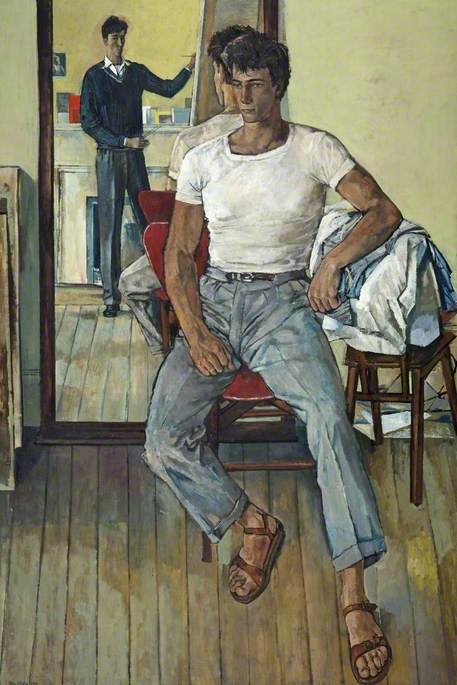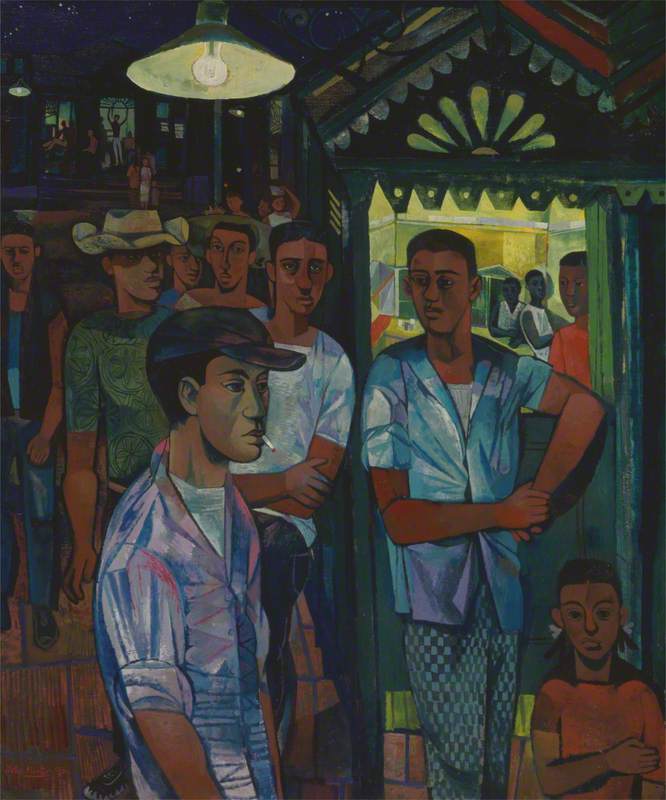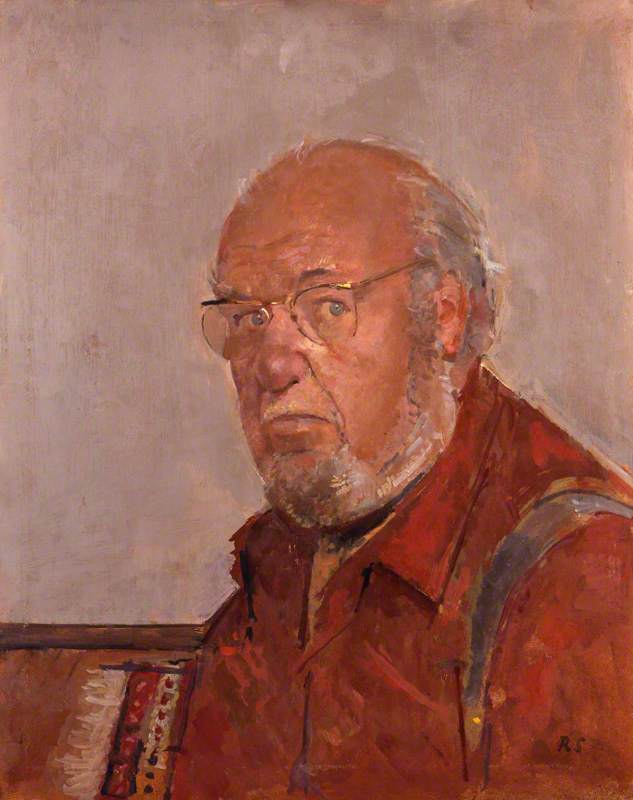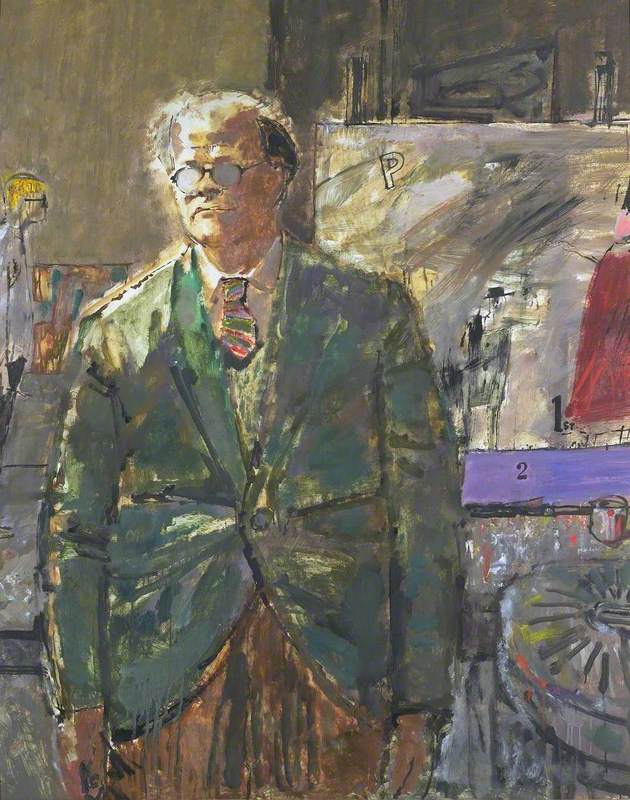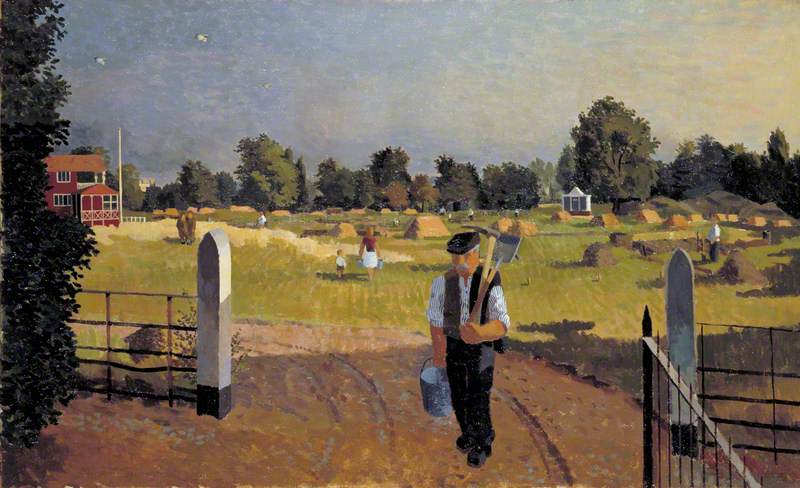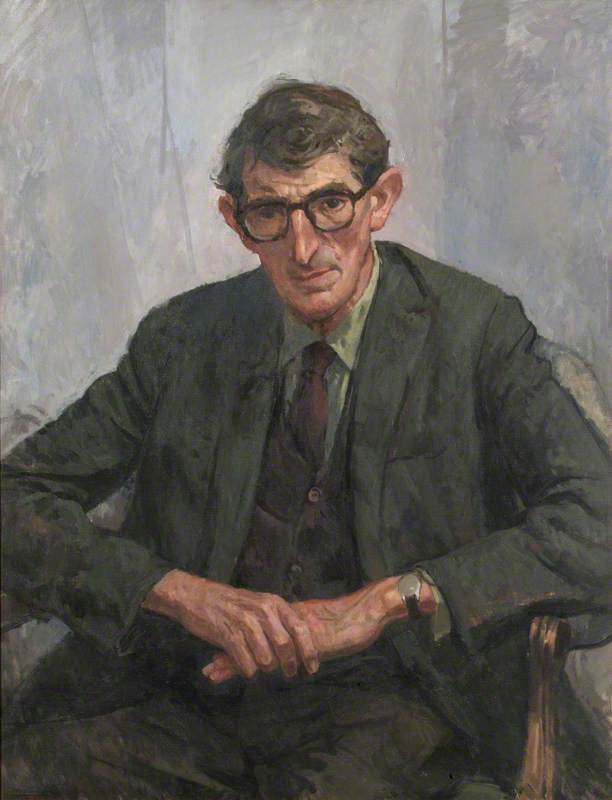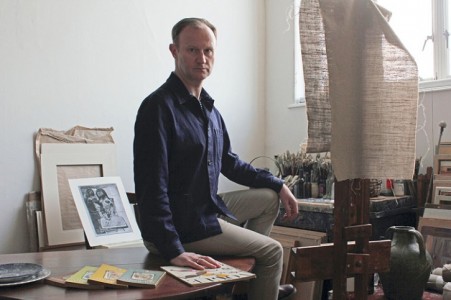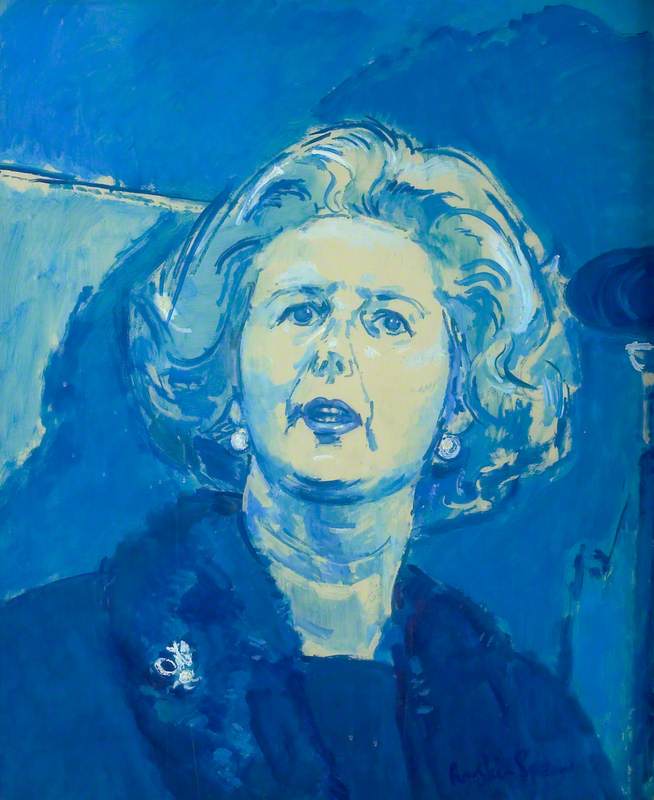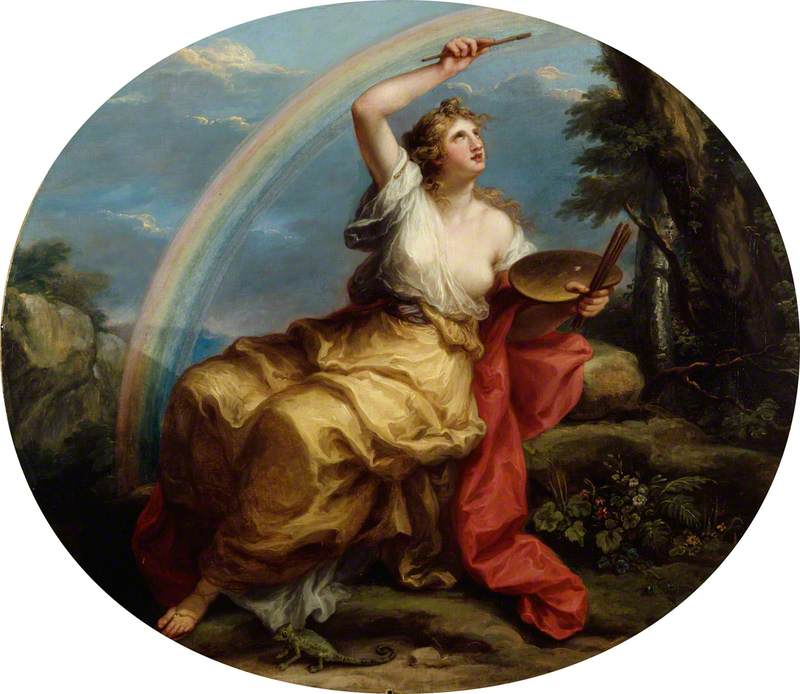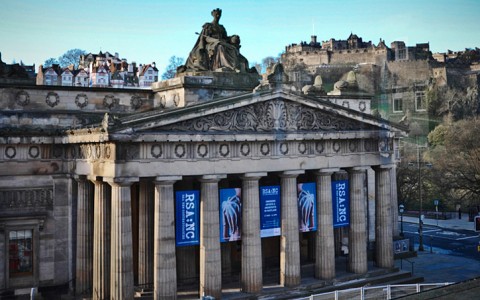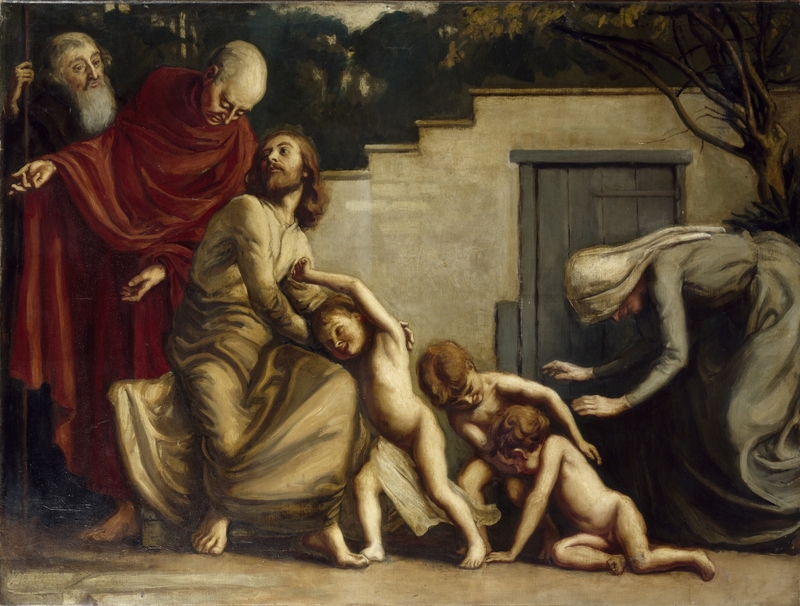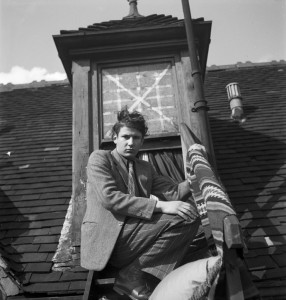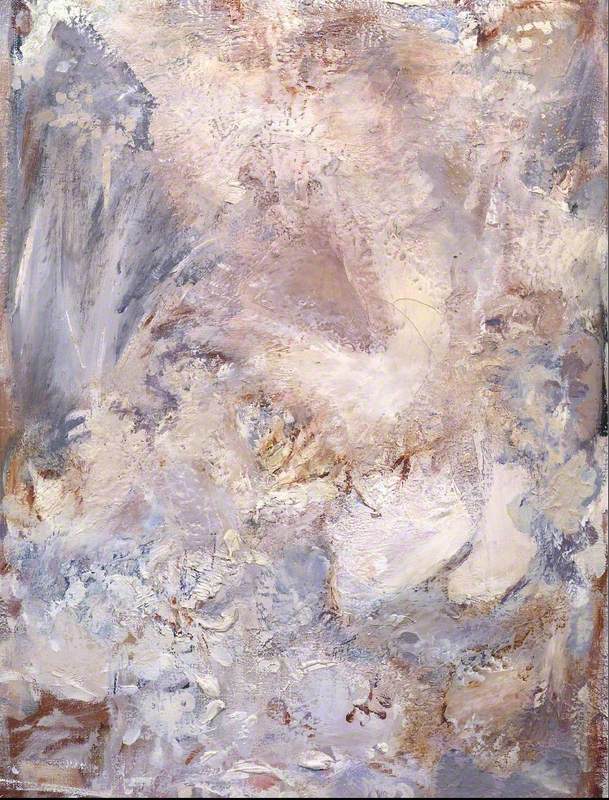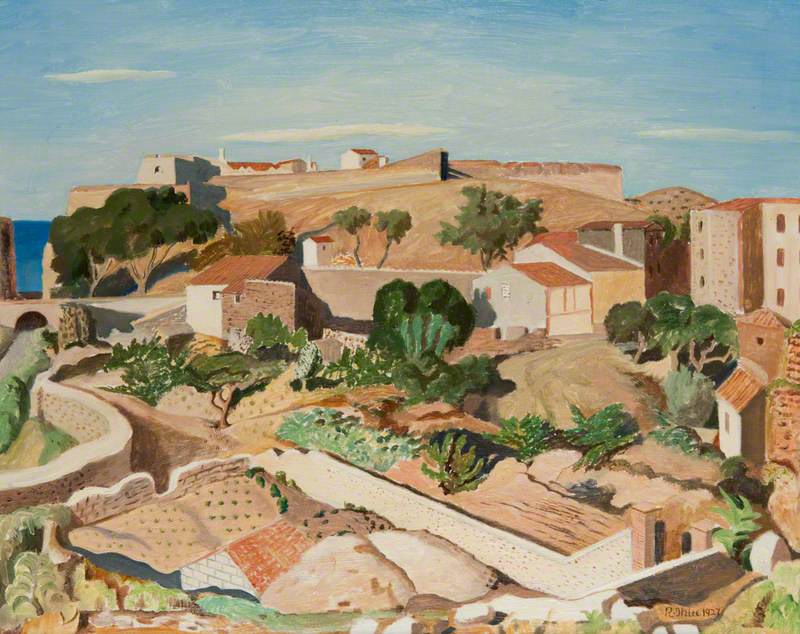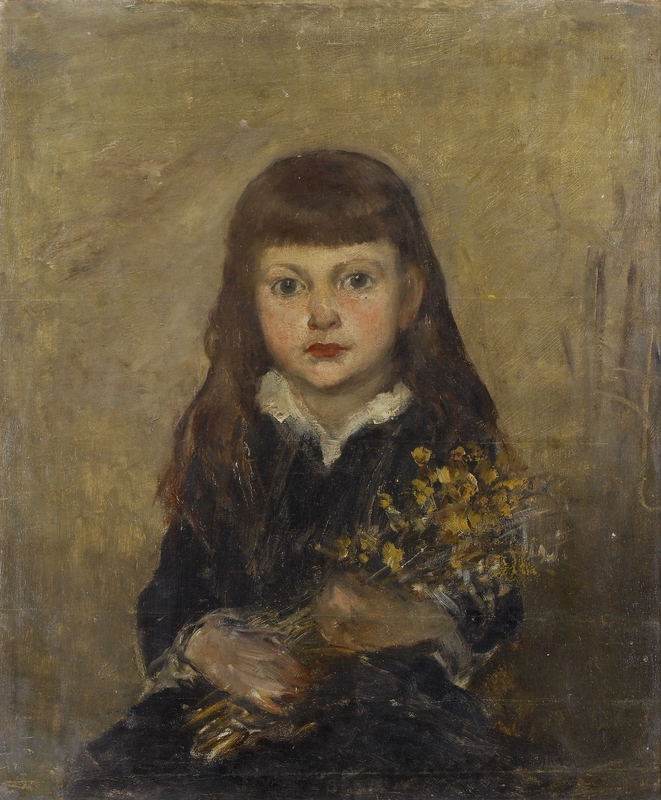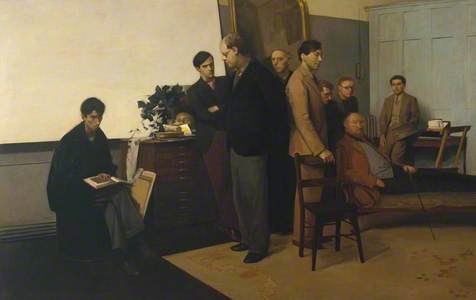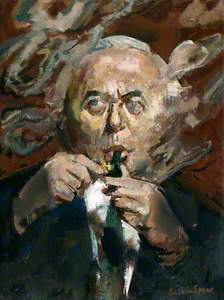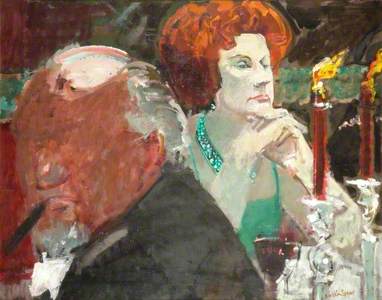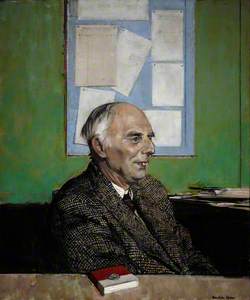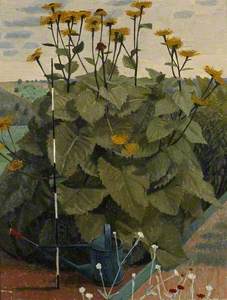These rather glum-looking gentlemen displayed in dull tones of brown and grey were the staff of the Royal College of Art's painting school in 1951. As you can see it's hardly an advertisement for diversity. The nine middle-aged men are quite a contrast to the current teaching staff, at least half of whom are women.
The painting by the school's leader, Rodrigo Moynihan (1910–1990), who appears at the far right in the picture, was one of 60 works featured in a Festival of Britain touring exhibition. Many of the other images were abstracts by the likes of Peter Lanyon (1918–1964), William Gear (1915–1997) and Victor Pasmore (1908–1988) but Moynihan's traditional grouping is more than just a period piece. It features painters who produced portraits of themselves and others that resonate today.
The output of the relatively youthful figure on the far left of the picture serves as a counterpoint to the cliché that the 1950s were uniformly drab. John Minton, then aged 34, was colourful in both work and life.
Tall, gay and striking looking he had a brilliant start to his career and a student following known as 'Johnny's circus'. Along with Lucian Freud and Francis Bacon, he was a habitué of London drinking clubs, and, a year before Moynihan's group portrait he visited Jamaica resulting in several atmospheric nighttime portraits.
With the advent of abstraction, though, Minton's figurative work fell from favour contributing to a depression which led to his suicide on 22nd January 1957. The day before he had been visited in his studio by Ruskin Spear (1911–1990), who is stretched out on a chaise-longue in the group portrait. Here he looks quizzical some 30 years later.
Spear and Moynihan were the busiest portraitists of the group with Spear particularly adept at catching politicians in striking poses, such as this painting of Harold Wilson.
At a Royal Academy banquet in 1968 his eye was drawn to Wilson's flame-haired cabinet colleague Barbara Castle.
Spear's closest friend at the RCA was Carel Weight (1908–1997) – tall with specs, third from left in the group portrait, and somewhat wider in Spear's portrait ten years later.
Indeed, he is barely recognisable from a youthful self-portrait painted in his early twenties.
Carel Victor Morlais Weight
1930
Carel Victor Morlais Weight (1908–1997) 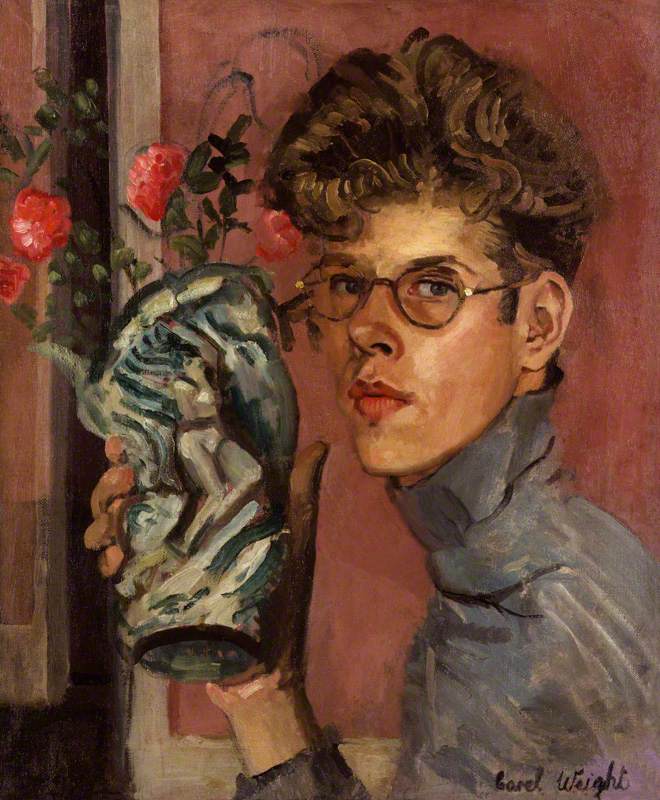
Weight's most characteristic work features troubled figures in mundane settings inviting viewers to puzzle over some preceding drama.
The World We Live In
1970–1973
Carel Victor Morlais Weight (1908–1997) 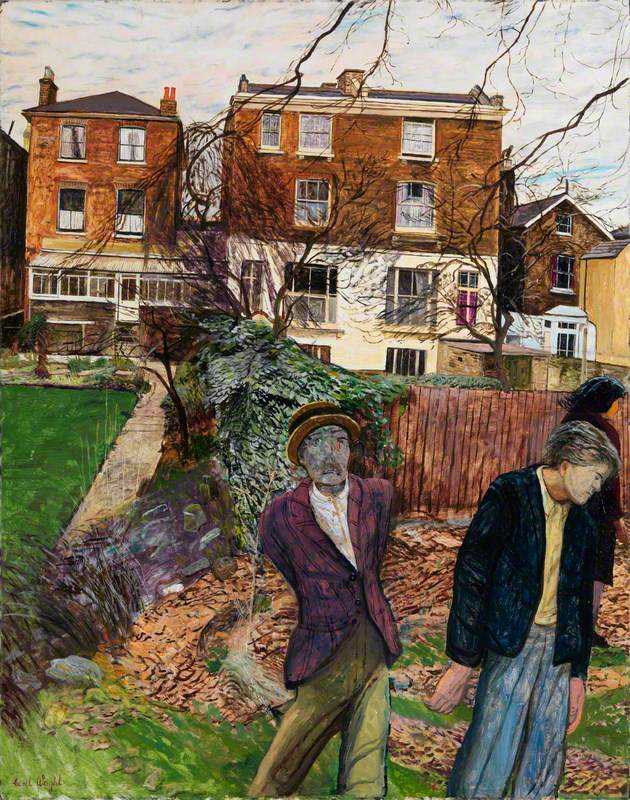
The prolific Spear also made a portrait of his colleague Rodney Burn (1899–1984), fourth from left in the group in front of the mirror looking outwards.
During the Second World War, Burn worked for the Camouflage Unit at Leamington Spa which employed several artists including Robin Darwin (1910–1974) and Leon Underwood (1890–1975). In 1945 Burn painted a portrait of the unit's controller, Dr R. E. Stradling (1891–1952).
During the war Kenneth Rowntree (1915–1997), second from right in the group, worked for Recording Britain, the brainchild of the then Director of the National Gallery Sir Kenneth Clark. The project provided welcome employment for more than 60 artists. By recording some of Britain's landscape and buildings, it was designed to encourage national pride while serving as a reminder of what could be lost. It married well with Rowntree's Quaker principles of peace, community and stewardship of the earth.
Charles Mahoney (1903–1968), on Rowntree's immediate left in the group, moved with the RCA to Ambleside during the war.
He is best known for his images of plants and gardens one of which was exhibited at the 1951 Festival of Britain paintings exhibition.
His book Gardeners' Choice, which he wrote and illustrated with his one-time companion Evelyn Dunbar (1906–1960), has become a minor classic.
Colin Hayes (1919–2003), wearing a bow tie and leaning against the chest in the group portrait, was another who turned his hand to writing. He produced books on Rembrandt, Renoir and Ruskin Spear. In later life, he specialised in brightly coloured continental landscapes in contrast to his earlier, more subdued, work.
Interior: Girl Seated at a Table
c.1961
Colin Graham Frederick Hayes (1919–2003) 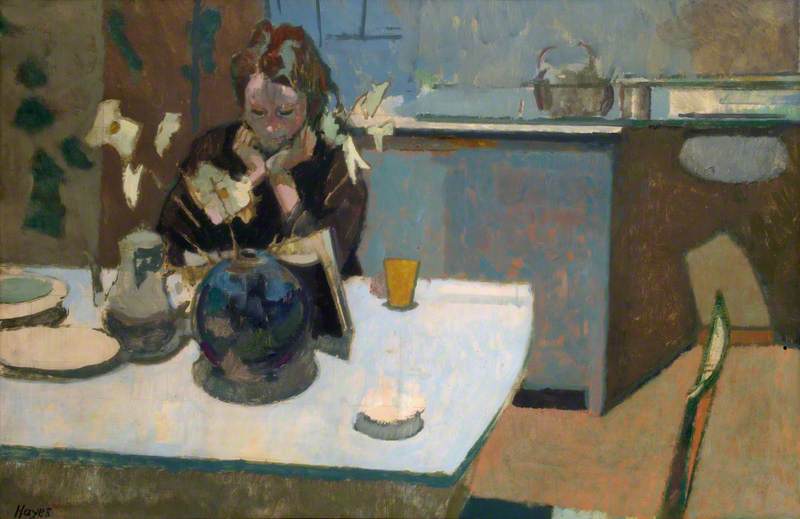
Spear wasn't the only member of the group to paint famous contemporary figures. Robert Buhler (1916–1989), whose hand is resting on a chair in Moynihan's portrait, made notable studies of the poets W. H. Auden (1907–1973) and Stephen Spender (1909–1995) as well as this striking image of Dame Edith Evans (1888–1976).
Dame Edith Evans (1888–1976), as Volumnia, Stratford
(from 'Coriolanus') 1959
Robert Buhler (1916–1989) 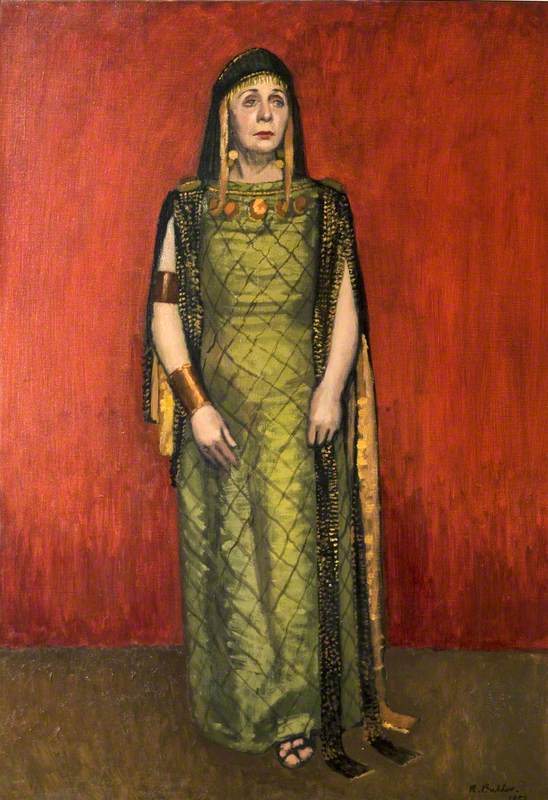
Dame Edith, then aged 71, poses as Volumnia, the mother of Coriolanus. Sir Laurence Olivier took the title role in the 1959 Royal Shakespeare Company production which saw early appearances by Vanessa Redgrave, Albert Finney and Diana Rigg. Dame Edith's most famous film role, Lady Bracknell in The Importance of Being Ernest, had premiered seven years earlier.
Perhaps Sir Rodrigo Moynihan's most notable solo portrait was of another leading lady also associated with handbags.
Margaret Hilda Thatcher, née Roberts, Baroness Thatcher
1983–1985
Rodrigo Moynihan (1910–1990) 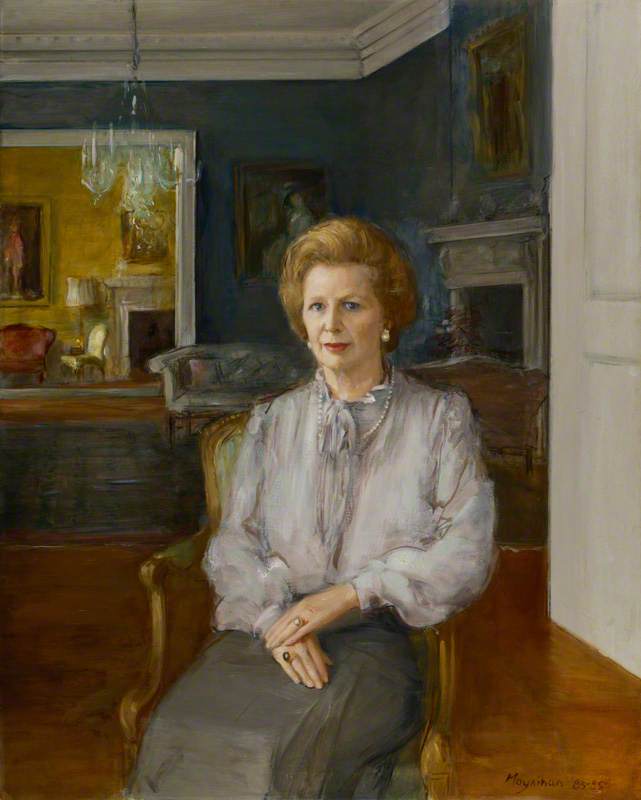
It was commissioned after her second general election victory of 1983. Not so well known, is a Thatcher portrait Moynihan painted some 28 years earlier.
Sir Reginald Thatcher (1888–1957), Principal of the Royal Academy of Music (1949–1955)
1955
Rodrigo Moynihan (1910–1990) 
Although Reginald Thatcher lacked the celebrity status of his political namesake (no relation), I much prefer this portrait... not least because he was my grandfather.
James Trollope, author and columnist
James' latest book, Rudolph Ihlee: The Road to Collioure will be published in May 2022 by Lund Humphries

